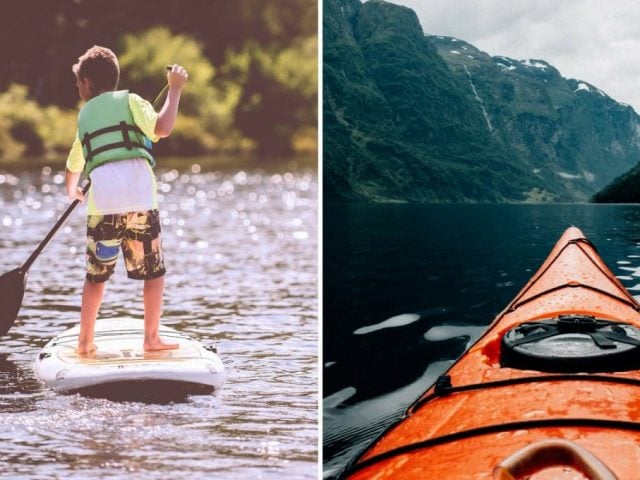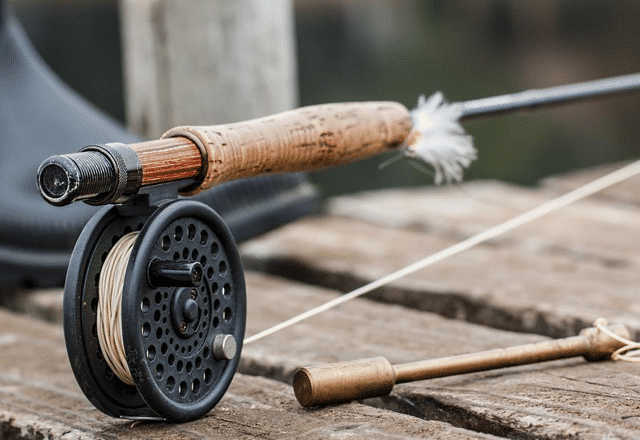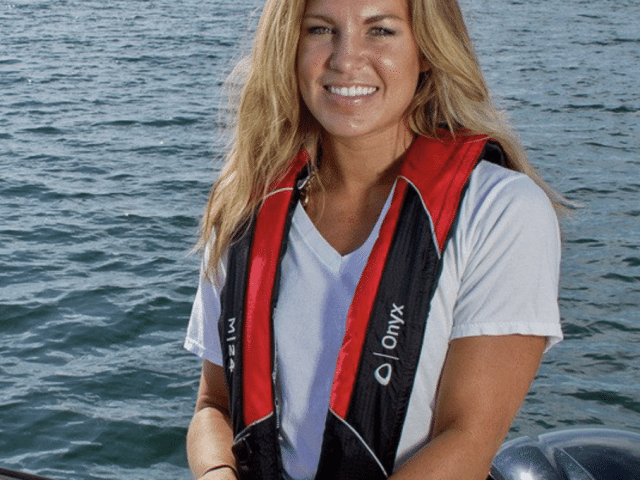Stand-up paddleboarding (SUP) is one of the most beginner-friendly watersports you can try. You don’t have to worry about losing your board or wiping out in the surf, or slamming into the water behind a boat. Many beginners can stand right up on their boards and make it a whole day without even falling.
Although the sport is very forgiving, there are some beginner paddleboarding tips you should know if you’re just starting out. Whether you’re renting one or have already bought your first paddleboard, here are ten tips to that will help you achieve pro status in no time.
1. Have the right gear.
The three most important pieces of equipment for a beginner are a paddle, a leash, and a personal flotation device (PFD).
If your board purchase didn’t come with a paddle, look for an adjustable one when you first start out. Try extending it to a length around 8-10 inches taller than you the first time you go out. You will quickly find out what works best for you when paddling, and can make adjustments on the water.
A leash will keep you from getting separated from your board if you fall into a current or in windy conditions. It’s even more important to have one if you’re paddleboarding in the ocean.
Last, but not least, it’s important to always bring a personal flotation device. While it’s unlikely you’ll ever have to use a PFD, it’s against the law in most places to paddle without one.
2. Check the weather forecast.

This tip is not just for beginners, but for anyone paddling out. If you live somewhere coastal, this is especially important. You can wake up to a beautiful day and find yourself stuck in a thunderstorm just hours later.
While most people know to make sure it’s not raining, you should also check the wind forecast each time. On a windy day, your paddle boarding experience won’t be as enjoyable, especially if you’re just starting out. The wind can also carry you out further than you want to go and make it tougher to paddle back. The free MyRadar Weather app has a cool filter that shows you wind direction and wind speed in your area.
3. Plan your route.
Unless you have experience surfing, start out in a flat body of water, like a lake, while you get your sea-legs and learn the proper technique.
Plan your route carefully if you’re going somewhere with limited visibility. For example, in some places in Florida, shallow channels are connected by mangroves, which can be maze-like and difficult to navigate. Keep your phone or GPS in a waterproof pouch with you at all times in case you get disoriented.
Additionally, begin by only going half the distance you think you can go, then turn around. It’s easy to overestimate your endurance and stamina at first, especially if winds are in your favor. However, it’s important to remember that winds and tides can shift and make the trip back to shore more difficult.
4. Know where you’re paddling.
This goes hand-in-hand with tip #3. Knowing where you’re paddling means understanding what you might encounter when you go out.
If you’re paddling somewhere with a lot of boat traffic, look out for markers indicating the no wake zones and idle zones. Paddle closer to the shoreline to avoid wake and have a smoother ride.
When you fall (yes, you’ll eventually fall), it’s a lot easier to get back on your board in shallow water. Hug the shoreline so you can build your confidence, knowing you can reach the bottom if you fall off your board.
5. Start in a seated position.

The easiest way to learn how to paddleboard is to start in a seated position.
Walk your board into knee-deep water, being mindful of the fins. Start by getting on the board, one leg at a time, into a kneeling position. Keep your weight at the center of the board, near the carry handle.
It may be uncomfortable to stay on your knees longer than a few minutes, so feel free to play around with different seated positions. Some people enjoy sitting with their legs crossed, while others like to extend their legs straight out.
It’s truly difficult to tip your board while sitting, since your center of gravity is so low. Take this time to get a feel for paddling and get used to the (in)stability of the board.
6. Switch between sitting and standing.

Once you’re comfortable with paddling seated, it’s time to find out what stand-up paddleboarding is all about! Standing up is intuitive and different for everyone.
A simple technique is to plant both hands on the sides of your board, while putting one foot at a time in place where your knees were. As you gain your balance, slowly start to lift your torso up while letting go of the board with your hands. Work your way up until you’re standing straight, feet hip-width apart with a slight bend in the knees.
To sit back down, just reverse the motion. Generously bend your knees while bending at the hips and reaching for the board with your hands. Once your hands are firmly planted, set one knee down at a time. From your kneeling position, you can transition to sitting with your legs crossed or straight out.
Practice paddling both seated and standing. You may find it easier to stand when the wind is behind you, and easier to sit when paddling against the wind.
7. Paddle with the correct technique.

Now that you’re comfortable with standing up, you need to make sure you’re paddling correctly.
First, check that you’re holding the paddle the right way. Paddle blades are shaped like a spoon. While it may seem intuitive to scoop the water with the spoon, you should actually hold it the opposite way.
Next, keep your arms shoulder-width apart on the paddle. If you’re paddling on the left side, then your right hand goes on the top of the paddle, and vice versa. When you paddle, submerge your entire paddle blade in the water so you’re displacing the most amount of water and paddling further with each stroke.
To be more efficient, use your entire body to power your strokes. Take shorter, stronger strokes. Turn your torso as you dig your paddle blade down to keep your arms from wearing out. Keep your legs engaged and knees bent to help you balance.
Finally, look where you want to go. Shifting your gaze up and toward the horizon will help keep your posture straight and your body balanced.
8. Learn how to turn.

By now, you’re standing up and paddling straight. The next thing you’ll need to learn is how to turn.
To turn right, reach forward, submerge the entire paddle blade in the water to the left of you, and draw a large sweeping “C” shape with your paddle away from the board. Use your core and legs as leverage to shift your weight to the left as you turn.
Reverse the motion to turn left. Practice your turning by drawing big “C”s on either side of your board. As you get more advanced, you’ll be able to use your paddle to slow down and turn on a dime.
9. Learn to fall and get back up.
It’s inevitable that you’ll fall off your board at some point. Fortunately, taking a plunge off a paddle board is very forgiving if executed correctly.
If you begin to lose your balance and realize you’re going down, shift your weight to one side and push off with your legs to fall far from the board. This will help minimize the chance of falling on your board, which hurts a lot more than falling into the water. It will also help you avoid flipping your board if it’s loaded down with gear. It may be tough to remember in the moment, but do your best to hang onto your paddle as you fall.
When you recover your board, set your paddle on the board. Grip the center handle with one hand and the far edge of the board with the other. Slowly pull your torso onto the board being careful not to flip the board toward you. Once your upper body is on the board, wait for your legs to float to the surface and slide one leg at a time back on the board until you’re laying down.
Work your way back into a seated position as you quickly realize falling wasn’t as bad as you thought it would be.
10. Try new things.

The best way to progress as a beginner paddleboarder is to continue trying new things. There are so many different things you can do with your paddleboard as you become more advanced.
If you’re looking for a more challenging workout, try exercising on your paddleboard. You can get a great full-body SUP workout by simply modifying traditional bodyweight exercises. Or improve your flexibility and try some SUP yoga, starting out with simple standing poses and working your way into your favorite asanas.
Check out your local SUP shops and join a group on a tour in a new area. Going with a guide is a great way to venture out to new places you might not explore on your own. There is truly no end to the new things you can do with your paddleboard.
We hope these tips have motivated you to go out and practice. As you learn, remember not to get frustrated. The best thing about paddle boarding is that every time you go out, you’re better than you were the time before. Leave us a comment and let us know what you’re most looking forward to doing with your paddleboard!





